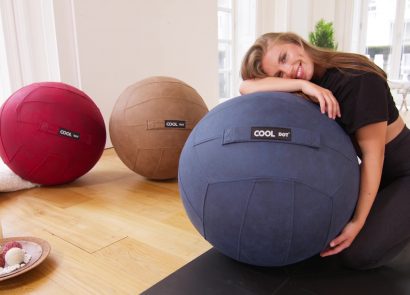As simple as running or jogging may be, it certainly isn’t easy. Especially when you’re a beginner. Everyone from Fearne Cotton to Davina McCall have spoken about the positive effects regular runs have on their mentality. Requiring little to no kit, no costly gym membership, running is open to all of us and can make you fitter, healthier and happier. So, are you ready?
The easiest ways to start running
Start slow and small
“To reach your running goal, start slow,” says running coach and champion Karen Weir. “Running is a weight bearing exercise and even fit people need to get muscles conditioned to running to avoid injury.” Fitness trainer Marianne Clark agrees, and says you should focus on building cardio fitness and stamina, not speed. She says: “You should be able to hold a conversation while you run and if you can’t, slow down.”
“Don’t go out there in the first week and give Mo Farah a run for his money!” adds world-record marathon runner Fiona Oakes. “̒Regular and realistic’ is my mantra. Have attainable short-, medium- and long-term targets that are not just based on what you can do physically, but what your work and social schedule permits. Running is about your mental ability and achievement too – listen to what your body is telling you.”
And don’t be afraid to rest. “Allow for easier recovery weeks every three to four weeks, as this will help reduce the risk of injury,” says running physiotherapist Tom Goon.
Try running on both road and treadmill
Treadmills are a great way to get going because the cushioned belt provides more support, but once you’re feeling more confident (or bored of four walls), add variety. “You can get just as fit on a treadmill as running outdoors, and they’re great for interval and speed training, but outdoor running promotes a natural stride and pace,” says Marianne. “Outdoors there’s also variety – terrain, surroundings, weather etc – as well as added vitamin D! Try off-road grass or trails, which are forgiving underfoot but also challenging because of the uneven surfaces.”
Embrace discomfort when running
That first few minutes of a jog can feel like anything but a fun run – even for experienced runners. “Some people describe it as ‘running through treacle’, says Marianne. “It takes time for your cardio system and muscles to warm up, and this will continue regardless of your experience.”
“Running is uncomfortable and may not get any easier – but that’s okay!” adds Karen. “Beginner runners think it should be effortless but you should find ways to embrace the discomfort. Just think about how amazing you’ll feel at the end, for example.”
It’s also worth experimenting to see if you feel more comfortable running on an empty stomach or with some fuel in you: of course, this depends on the distance you’re running, too.
Invest in running shoes
“A decent, well-fitting pair of trainers, such as Hoka running shoes, is a must for a long run,” says Karen. Fiona Oakes agrees: “Most good shops will do personalised gait analysis, which detects things like over- or under-pronation, cushioning and shock absorbency, and the best style for your discipline, distance and terrain. A good, well fitting pair of socks will provide extra cushioning and blister prevention, and a well-fitting sports bra is highly recommended!”
Improve your running technique
While everyone’s technique is different, follow Marianne Clark’s five-point guide to improve your style:
- Stand tall (don’t slouch) and keep your shoulders relaxed.
- Don’t over-stride – make sure your front foot doesn’t extend beyond your knee.
- Don’t shuffle – lift your heels towards your bum at the back of your stride.
- Pump your arms forwards and backwards (not across your body) to create balance and momentum.
There is no set rule about breathing, so experiment with what feels natural and takes the least amount of effort. If you are constantly out of breath, slow down!
Running motivation: get race ready
Whether it’s off-road, on-road, cross-country or obstacle races, there’s an event for every ability. Start with these entry-level events:
Park Runs: Weekly, free, 5k timed runs in local parks, open to all abilities.
Race for Life: A great way to use your new hobby for a good cause.
Colour Runs: Run through colourful powders and, at the end, chart your progress with your very own t-shirt masterpiece!
The next level for beginner runners
“Once you’ve built up your basic fitness, challenge yourself,” says Marianne Clark. “Build up speed, extend the distance and find challenging terrain.” Run coach Karen Weir recommends Google searching the term ‘running clubs near me’: “It takes courage to do this but these groups are very welcoming. Try Run Together, which offers informal groups across the UK,” she says. “It’s much easier to stay motivated if you’re surrounded by like-minded people, and you can make it a social event.”
Beginner 5k running plan
Instead of sprinting to the finish line, try sports coach Marianne Clark’s eight-stage interval training running plan, which will see you running for 30 minutes in no time!
- 1 min run, 90 secs walk x 12 (12 mins run, 18 mins walk)
- 2 mins run, 90 secs walk x 8 (16 mins run, 12 mins walk)
- 4 mins run, 90 secs walk x 5 (20 mins run, 7.5 mins walk)
- 6 mins run, 90 secs walk x 4 (24 mins run, 6 mins walk)
- 8 mins run, 60 secs walk x 3 (24 mins run, 3 mins walk)
- 9 mins run, 60 secs walk x 3 (27 mins run, 3 mins walk)
- 5 mins run, walk 90 secs walk, 10 mins run, 90 secs walk x 2 (30 mins run, 6 mins walk)
- 15 mins run, 90 secs walk x 2 (30 mins run, 3 mins walk)
Marianne Clark’s workout tips
- Don’t run on consecutive days, and complete each stage at least twice before moving on to the next one.
- Stick to the flat initially, but introduce inclines as you progress.
- Time your intervals with a watch or download an interval timer onto your phone.
- Your run pace should be easy; your walking intervals should be brisk.
- Do it with a friend – it is so much easier in good company!
5 ways to keep running
Keep a diary
This is the ideal way to see your progress and help you remember how far you’ve come. “Benefits also include an increased mental and emotional investment in the sport in ways that may positively affect your performance,” says personal trainer at Fitness First, Gus Martin. “It doesn’t take much time – simply use a notebook or running app and record the distance, duration, and format of your workout. The only other essential information is a weekly mileage total, recorded at the end of each week.”
Join a running club
If you’re not a fan of training alone, why not join a local running group to achieve the results you want? The Nike+ Run Clubs take place every week for both men and women across the country, They’re free to join and are open to runners of all levels and abilities.
Run with a friend
“Running is brilliant, fun, challenging and accessible pretty much everywhere,” says personal trainer Sam Warrington. “The only trouble is, after the initial excitement, it can get a bit boring. Training with a friend instantly adds an element of competition, which tends to bring out the best in your performance. No matter what anyone says, we’re all naturally competitive. So if you’re running with a mate you’ll want to be that half-step in front. It gives you the opportunity to compare running techniques, compete for PBs, and can catch up on last night’s telly! The best thing is, when you feel a bit tired or are thinking of missing a session, having a friend knocking on your door is the best motivation to stay on track.” Jenni Falconer is also a fan of running with a friend: it’s one of her top tips for long distance running motivation.
Find a role model
For most runners, role models play a huge part in how you engage with running and training. “As humans we learn by modelling, imitation, and observing. Therefore, it’s only natural that finding someone you admire in sport is an excellent way to progress and, more importantly, set yourself achievable goals,” Gus Martin tells us. “Set yourself targets based on how they achieved theirs. Surround yourself with their stories of hard work, dedication, discipline and success, as well as how they dealt with failure.” We can’t think of a much better role model than Paula Radcliffe: check out our article on how she fuels her runs.
What’s better – road running or trail running?
Things we love about running: it’s as good as a shot of valerian for turning down your stress dial; it’s so kit-light you can take it on holiday without having to pay for extra baggage; it gives you carte blanche to eat whatever the heck you fancy. OK, that last one was a lie – runners shouldn’t eat whatever they want. Let’s just say that sometimes, you’ve earned the right to chocolate cake. Oh, and did we mention that running makes you feel sublime in an ‘I’m so smug that I ran before work’ kind of way? But not all forms of running boast the same body-boosting benefits. Here’s what trail and road running have to offer…
Body benefits of trail running
Trail running 101 – rugged ground, arduous hills and varied terrain place serious demands on the body. The undulated surface of the trail will recruit a host of small stabilising muscles that road running doesn’t require. Plus, rolling ground demands you use balancing skills that really hone your core. The net result is that trail running burns serious calories – rumour has it that running off-road burns 10 percent more calories than on-road. But there are hidden dangers: “Running on complex trails can cause a range of problems if your body isn’t conditioned,” says Graeme Hilditch, in his book Trail Running from Start to Finish. “Undulating surfaces, slippery rocks and steep climbs can all put the muscles under a significant amount of tension”. So, start slowly and increase the miles gradually.
Body benefits of road running
Road running offers all of the sport’s body-boosting benefits. For example, it’s great for heart health, improving circulation and reducing the risk of heart disease. It carves a lean lower half; it burns oodles of calories (around 705-865 per hour), and improves bone density. It’s also great for speedwork sessions because the roads are flat and easy to measure. “It’s easier to run the same route and compare times on the roads, as the surface won’t change,” explains Nikki Bartlett, top triathlete and Nordic Oil ambassador. And doing speedwork doesn’t just make you fast, it also makes you fitter (and thinner, in case you’re wondering). But road running is tough on joints. Asphalt, the stuff Britain’s roads are made of, puts more shock through the body than off-road surfaces – and research from the University of Delaware has linked high impact loading to plantar fasciitis and tibial stress fractures.
Brain benefits of trail running
Find running difficult? Training in a green space – a park, countryside trail, forest track – plays tricks on your mind. According to a review by the University of Essex, exercising on Mother Nature’s home ground feels a whole lot easier than indoor or urban sessions. Apparently, people move more quickly in green spaces because their rate of perceived exertion decreases due to an interest in the natural surroundings. “Trail running allows your mind to explore nature at its best,” says Nikki Bartlett. “It allows your mind to wander without having to stop at roadsides or traffic lights.” The varied ground on the trail also helps hone your proprioception skills – or your awareness of where your feet are – and this will develop your balance, too.
Brain benefits of road running
Road running boosts your brain from the inside out: it encourages the growth of grey matter. Case in point – neuroscientists from the University of Cambridge report that running spurs the growth of new brain cells, while further research confirms that regular running bolsters the production of the brain growth stimulating chemical, BDNF (Brain-Derived Neurotrophic Factor). Of course, this is the case for all forms of running. Road running, however, has its own brain boon. Road running typically lends itself to a faster pace, and this improves cognition. Data in the Journal of Neuroscience shows that running speed increases the firing rate of some neurons, boosting brain power.
Mental health benefits of trail running
Over 64 percent of runners train on trails because they find them relaxing. And they’re right – data confirms that wilderness workouts reduce blood pressure and increase parasympathetic activity (the nervous system division linked to a relaxed state). However, off-road running is also just really enjoyable. “Trail running can be much more interesting and rewarding,” adds Helly Hansen run expert, Jules Roberts. “It takes you through stunning and varied scenery, which makes trail running a lot of fun”. We’ll choose running fun over striding monotony any day.
Mental health benefits of road running
Running is hands-down one of the best ways to get over a bad day at the office. Data confirms that it keeps ‘happy’ neurotransmitters in the nervous system for longer, boosting your mood. However, research in the International Journal of Environmental Research and Public Health shows that nature boasts the biggest overall benefits for wellbeing, and an absence of greenery may, perhaps subconsciously, contribute to your stress levels. “Running really boosts the soul,” agrees Bartlett. “Whether you’re a beginner or an experienced racer, it allows you to improve and achieve your goals. This has a huge impact on feelings of positivity.”
How to smash your personal best
‘Room for improvement’ – a teacher term that was forever dreaded. Yet usually justified as we opted to chat about the latest class crush rather than thrash out another algebra equation. But when it comes to smashing our running goals, taking our performance to the next level is more of a no-brainer and, as all keen runners know, there comes a time when bashing out a quick 5k just isn’t quite cutting it. So how do we smash our personal best?
HIIT workouts can help to maximise our running potential, and there are plenty of other exercises that can benefit our stamina. “Running places a substantial amount of repetitive forces on the body. Therefore, it’s vital that we take precautions to safeguard our structure with a well-placed routine that prepares our trunk, hips and thighs,” says celebrity personal trainer Matt Roberts. “Improving the maximal ceiling of a muscles’ ability also reduces the relative demand of running, helping to improve our overall efficiency.” And who doesn’t want to set a new PB? We asked a team of experts (no teachers included) to share their top insider tips to get us from a C to an A+ in an instant.
Work your core
It’s easy to think that your legs and bum are the only muscles working hard whilst running, but your core is also doing its bit to keep you steady, especially if you’re on rough terrain. By adding a series of core exercises to your routine, you’ll be able to stabilise your body on the go and improve your form when you get tired, enabling you to hold a faster pace. “Power training will add to the above by teaching your body to not only tolerate but to reciprocate the forces experienced in running, by better storing energy in muscles and tendons, thereby further reducing energy demands,” Matt tells us.
To build a strong midsection, perform the below exercises for 30 seconds each in a circuit, three times a week. You can even include them before, after or during a run to keep your body guessing.
Plank
Place your hands on the floor under your shoulders and stick your legs out straight behind you. Pull your stomach in towards your spine and hold.
Side plank with leg lift
Perform a side plank with your legs stacked on top of each other. Lift your top leg up and hold for five seconds and lower. Repeat for 30 seconds before swapping sides.
Single leg glute bridge
Lay on your back with your knees bent and feet on the floor. Keeping your knees together, straighten one of your legs and push through your bent leg to raise your hips into the air. Hold for a couple of seconds before lowering to the floor.
Windscreen wipers
Lay on your back with your arms out to your sides and your legs straight up in the air. Keeping your back on the floor, move your feet out to the right side towards the floor and hover an inch above the ground before moving them back to the centre and over to the other side.
Superman hold
Lying on your stomach with your arms in front of you. Lift your head, chest, arms and legs off the floor at the same time. Hold for 20 seconds, then lower everything back down to the ground.
Try yoga
If you’re stretching after each run, you should be pretty limber by now. But, it’s easy to get stuck in a rut. By opting for your go-to stretches each time, you may be neglecting other vital muscle groups. “Flexibility training is essential to increase running performance (speed and endurance), by allowing full range of motion across your entire body and not just your hip joint,” says Andrew Tew, lab manager at the Asics flagship store.
Including yoga into your fitness regime can not only relieve tight hamstring and quad muscles, it can also lengthen and tone them, helping to eradicate injury as well as maintaining mobility and stability within the joints. As a runner, knowing how to breathe when running is important. So, finding a breathing pattern that fills your cells with the right amount of oxygen could be the difference between a short jog and smashing those PBs. Looking to traditional yoga practices can teach you how to control your breath in a more efficient and effective way, utilising your entire lung capacity and breathing through any slight discomfort to go further. Stretching your way through a yoga class twice or three times a week could make all the difference to ensure you’re not out of puff too soon.
Increase your running stamina
As much as we love the lithe result running gives us, sculpting a little lean muscle can allow you to go further and harder than before. “Strength training helps fix the instabilities that are created inside our bodies by running, which can decrease performance and increase the chance of injury,” Andrew tells us.
“Increasing the power of your muscles compared to your weight will heighten your performance, as they’ll have to work less hard to perform the same job. To notice any real long-lasting benefit, strength training needs to be performed a minimum of three times a week. But the good news is that neither of the sessions should last more than 45 minutes. Twenty minutes is more than sufficient as long as it is focused, with a minimal break”. Although a weight training session would ideally focus on an all-over body workout, targeting all muscle groups, Matt suggests nailing the basics before you move on to more advanced moves.
“Variations of the squat, step up, and deadlift will provide sufficient stimulus for lower body and trunk development. These can be performed using different loading zones and repetition schemes to develop strength or power. Think more volume (more sets x reps) for strength and think faster dynamic tempo, less volume for power development,” he says.
Common running injuries (and how to prevent them)
To discover the common injuries to watch out for, read our guide on how to prevent problems such as shin splints from ruining your run.






















